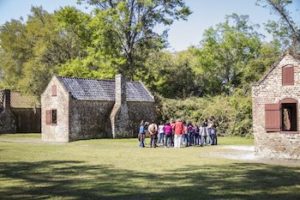
*On this date in 1681, we affirm Boone Hall Plantation. It is located in Mount Pleasant, Charleston County, South Carolina, and was one of the estimated 46,200 American plantations in 1860.
The earliest known reference to the site is a 470-acre land grant from owner Theophilus Patey to his daughter Elizabeth and her new husband, Major John Boone, as a wedding gift. Their land became known as Boone Hall Plantation, but it was unknown when a house was built on the site. John Boone was one of the first slave owners to arrive in the colony of South Carolina in 1672. Boone and his wife were ancestors of Founding Fathers Edward Rutledge and John Rutledge.
Boone was elected to the colonial Grand Council during the 1680s but was removed twice because he illegally trafficked enslaved Native Americans, became associated with pirates, and concealed stolen goods. He did hold other local offices, such as tax assessor and highway commissioner. Boone divided his estate among his wife and five children when he died. His eldest son, Thomas, made Boone Hall his home. It later passed to another descendant known as John Boone. The Boone family owned the plantation until fourteen years after descendant John Boone's death when his widow Sarah sold the property in 1811 to Thomas A. Vardell for $12,000.
Shortly after, Henry and John Horlbeck bought the property, including slaves. They used several enslaved workers, formerly in the fields, to make bricks. During the early 19th century, Charleston's landowners built and expanded their houses in town and along the Ashley River. While the Horlbeck brothers have received credit for "building" many houses and public spaces in downtown Charleston using the brick from their plantations, enslaved workers had made the bricks, and others accomplished the actual construction under the watch of the Horlbecks and their overseers.
The work of enslaved people, self-taught and acquired skills, including carpentry, mathematics, and geometry, was central to the construction and appearance of many Charleston-area structures. By 1850, these laborers produced 4 million bricks by hand per year. The fingerprints of these workers are still visible in the bricks of many of these historic sites. The Horlbeck family planted the Avenue of Oaks that leads up to the plantation house. Enslaved gardeners and field laborers planted each oak in 1843 using hand tools. Similarly, the Horlbecks directed their workers to plant pecan trees on the plantation to cultivate a commodity crop. By the end of the century, Boone Hall was one of the leading producers of pecans in the United States.
When Henry Horlbeck died in 1837, several of his children settled his estate by transferring their interests in Boone Hall to four of his sons, Henry, Daniel, Edward, and John Horlbeck, on October 1, 1842. The sale described the plantation as having a "Wooden Dwelling House, Brick Stables, Barns, Brick Kilns, and buildings" on 1442 acres "commonly called and known by the name of Boone Hall." The plantation, which used enslaved labor until the American Civil War, is one of America's oldest plantations listed on the National Register of Historic Places.
The district's most important historic structures are the brick slave cabins located along Slave Street between 1790 and 1810. The district also includes a 1936 Colonial Revival-style dwelling and multiple significant landscape features. It has continually produced crops for over 320 years and is open for public tours.